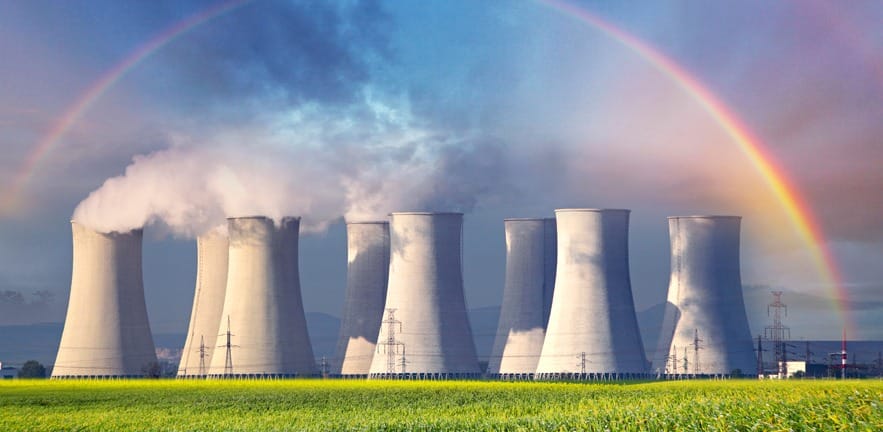As Dr Simon Taylor prepares to lead a webinar on China’s involvement in British nuclear power, what are the key questions you should be asking?

The agreement to begin work on new nuclear power station at Hinkley Point C was hailed by the Chinese president, Xi Jinping on his trip to the UK, at a joint press conference with David Cameron, as the “flagship project of cooperation” in a new era for China and Britain.
But is the nuclear plant, reckoned to be the costliest engineering project Britain has ever embarked on, actually a good deal for the UK? And what does it mean for the future of UK nuclear power?
These are two of the questions to be addressed in a special webinar on 26 November, China’s Involvement in British Nuclear Power, led by Simon Taylor, Senior Faculty in Management Practice (Finance) at Cambridge Judge Business School. Here, Dr Taylor sets out why the UK needs foreign help to achieve its energy policy goals and why China is probably the best place to find that help.
Why should we care about Hinkley Point?
It is the first new nuclear power station for 20 years in the UK; the first time that there has ever been Chinese investment in such a sensitive sector in the UK; and it is going to be fantastically expensive. The policy of building new nuclear is fundamentally sensible. As for the specific project and the specific choice of this reactor, it has turned out to be hideously expensive.
Why is it so expensive?
The official cost of this project is now put at £18bn. We are talking about the most expensive power station ever built anywhere – and it will be paid for by British electricity consumers. Part of the reason for the high cost is down to the fact that it is being funded with private sector money and at a private sector rate of return. If it was to be funded by the government directly and at government interest rates it would be a quarter, maybe even a third cheaper. But successive governments, including the Coalition and New Labour, have been almost obsessive about wanting this to be seen to be a private sector project. It is illusory to think that a project on such a scale can be done without state support. The reality is that this will receive a whacking great big subsidy, albeit not from government but from the customer.
Why is China seen as an expert in this sector?
China, because of its fast-growing economy and fast-growing demand for energy, has built a huge amount of power stations over the last 20 years. Most of them have been coal-burning, with the inevitable consequences of terrible pollution, particularly in Beijing. Over the last 10 years they have begun building nuclear stations and now have by far the world’s biggest programme. They are quite sincere in their desire to reduce pollution in China. Their experience in building civil infrastructure generally – they do far more than any other country – means that they are very experienced project managers.
So will the new plant actually make a difference?
About 16/17 per cent of total electricity supplied in the UK is from nuclear. If nothing is built by 2025 that will fall to about three per cent because there is a generation of reactors approaching the end of the lives. This new reactor would be the equivalent of seven per cent of total electricity supply. It is not enough to offset all those other stations closing but it makes a big dent in it. If it was built by 2025 the share of nuclear in the UK would go down from about 16 per cent to about 10 per cent – in other words, it will still shrink unless there are other projects.
And when can I expect to see something?
EDF [the French utility, who will be the lead investor, along with the state-owned China General Nuclear Power Corporation, who will pay £6bn for one third of it] had said it hoped to build the plant in time to provide electricity for Britons “to cook their Christmas turkeys in 2017”. But now the official completion date is 2025, and that comes with the non-trivial risk that there could be further delays. The power station type intended to be built in the UK is an EPR (European pressurised water) reactor, which is a French/German version of an American design. The Germans pulled out because they are now actively hostile to nuclear power. There are four EPRs under construction in the world: Finland, which is about six years behind schedule; France, about five years behind, and two in China which are only about one or two years behind.
Nuclear sounds risky – is it really the sensible option?
Nearly all the UK’s existing nuclear stations will close by 2025 because of their age. Our overall policy of cutting carbon emissions 80 per cent by 2050 is extremely unlikely to be achieved without replacing nuclear and possibly without adding even more nuclear. If we let that capacity close – and we don’t build new nuclear – we would have to build an implausibly large amount of renewable capacity. The wind doesn’t always blow and so we would need to have a large amount of gas-fired capacity and that runs counter to the idea of cutting carbon emissions.


